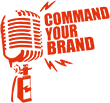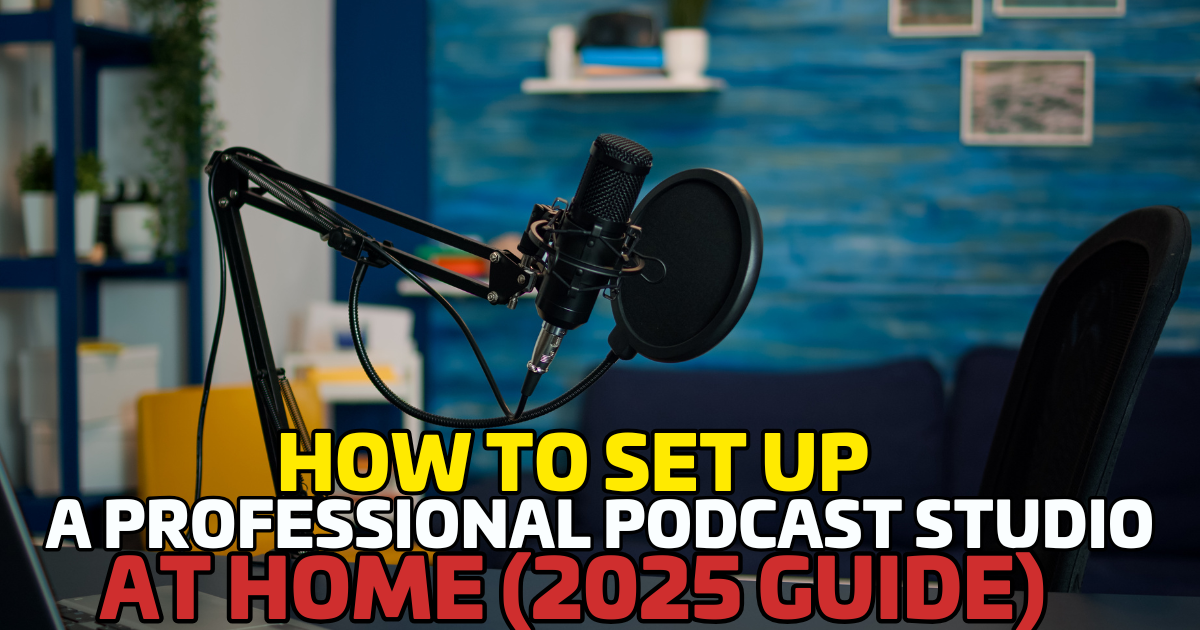The podcasting boom shows no signs of slowing down in 2025.
From CEOs to coaches to industry experts, more professionals are recognizing the power of podcasting to amplify their authority and reach new audiences.
The good news? You don’t need to rent an expensive recording studio to sound professional.
With the right gear, setup, and a few smart tweaks, you can create a professional-grade podcast studio at home– one that delivers crystal-clear audio, builds trust with listeners, and positions you as a thought leader.
In this guide, we’ll walk you step by step through how to set up your home studio like a pro.
Step 1: Choose the Right Space
Your room matters as much as your microphone.
A poorly chosen space can ruin even the best equipment.
What to look for:
- Small to medium-sized room (avoid open spaces).
- Carpets, curtains, or furniture to absorb sound.
- A quiet environment with minimal background noise (far from traffic or appliances).
Pro Tip: Closets with clothes are surprisingly great for absorbing sound. Many podcasters start here before upgrading to a dedicated room.
Step 2: Invest in the Right Microphone
The mic is the heart of your setup.
You don’t need to spend thousands, but you should choose based on your needs.
Types of microphones:
- USB microphones – Easy, plug-and-play. Great for beginners.
- XLR microphones – Higher quality, require an audio interface. Best for professionals.
Top Picks (2025):
- Budget: Audio-Technica ATR2100x (USB/XLR hybrid)
- Mid-range: Shure MV7 (USB + XLR)
- Professional: Shure SM7B (XLR, studio-quality standard)
Step 3: Get the Right Audio Interface or Mixer
If you’re using an XLR microphone, you’ll need an audio interface to connect to your computer.
Best options (2025):
- Focusrite Scarlett 2i2 (affordable, reliable).
- Rodecaster Pro II (advanced, includes mixer + sound pads).
Step 4: Use Quality Headphones
Why headphones matter:
- Prevents echo and feedback.
- Lets you monitor sound quality live.
Recommendations:
- Budget: Audio-Technica ATH-M20x
- Mid-range: Sony MDR-7506
- Pro: Beyerdynamic DT 770 Pro
Step 5: Improve Your Acoustics
Even the best mic can’t fix a noisy room.
Here’s how to soundproof affordably:
- Use foam panels or acoustic tiles on walls.
- Add a rug to reduce floor reflections.
- Hang thick curtains to block outside noise.
- DIY hack: Record under a blanket or in a closet if the budget is tight.
Step 6: Recording & Editing Software
Your gear is only half the equation- Nyou need good software.
Beginner-Friendly: Audacity (free), GarageBand (Mac).
Professional Options: Adobe Audition, Reaper, Hindenburg.
All-in-One Tools: Descript (edit by text), Riverside (record + edit + publish).
Step 7: Video Setup (Optional but Powerful)
Video podcasts are growing fast in 2025.
If you want to expand your reach on YouTube or LinkedIn, add video to your setup.
Video Essentials:
- HD webcam (Logitech Brio, Elgato Facecam).
- DSLR/mirrorless camera for pro quality.
- Good lighting: Softbox lights or LED panels.
Step 8: Organize Your Workflow
A professional studio isn’t just about gear- it’s about efficiency.
- Create a checklist before recording (mic, gain levels, background noise).
- Store templates in your editing software.
- Schedule backups to cloud storage (Dropbox, Google Drive).
Comparison Table: Budget vs. Professional Podcast Studio
| Category | Budget Setup (under $300) | Professional Setup ($1,000+) |
| Microphone | USB Mic (ATR2100x) | Shure SM7B (XLR) |
| Audio Interface | Not required (USB mic) | Focusrite Scarlett 2i2 / Rodecaster Pro |
| Headphones | Audio-Technica M20x | Beyerdynamic DT 770 Pro |
| Acoustics | DIY with rugs & curtains | Acoustic panels + bass traps |
| Software | Audacity / GarageBand (Free) | Adobe Audition / Descript |
| Video | Basic webcam (Logitech C920) | DSLR/mirrorless camera + pro lighting |
A professional podcast studio at home is more achievable than ever in 2025.
Whether you start with a $200 USB setup or build a $2,000+ pro studio, the key is to prioritize sound quality and listener experience.
Remember: listeners will forgive a missed word, but they won’t forgive bad audio.
Start with what you can afford, improve as you grow, and focus on what really matters- sharing your story, building your brand, and connecting with your audience.
A great studio gives you clean recordings, but professional editing takes them to the next level. Not sure where to start? Check out our guide on How to Choose the Right Podcast Editing Software.
🎙️ Ready to launch your podcast the right way?
At Command Your Brand, we don’t just help you set up the gear—we help you craft your message, grow your audience, and build a legacy through podcasting.
👉 Book a strategy call today and let’s turn your home studio into a platform for authority and growth.




